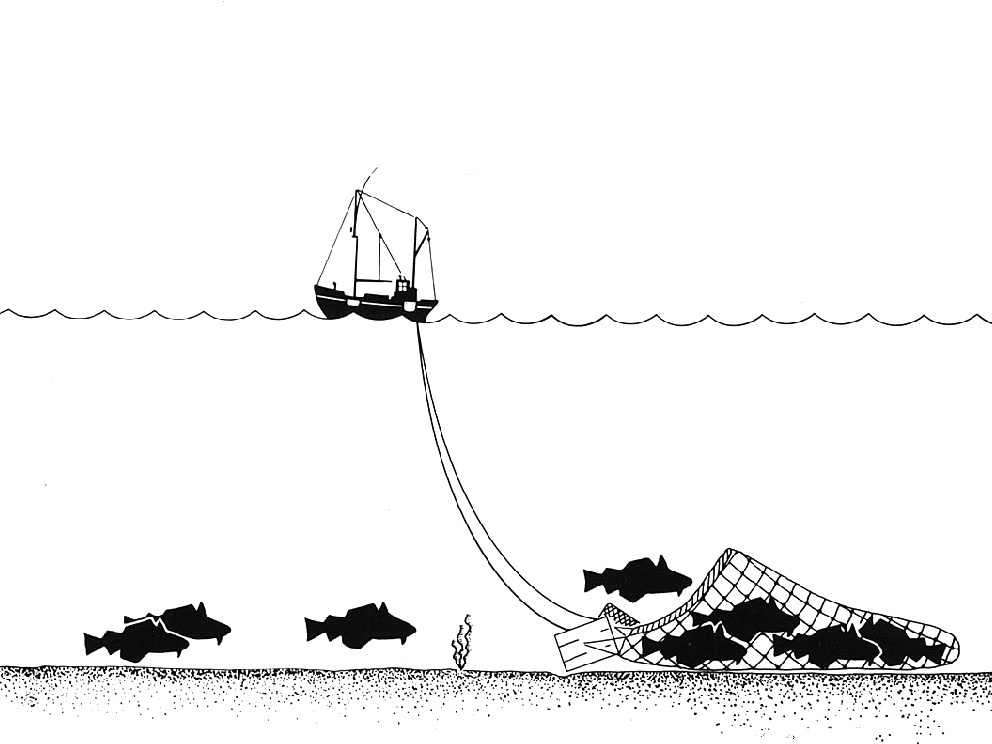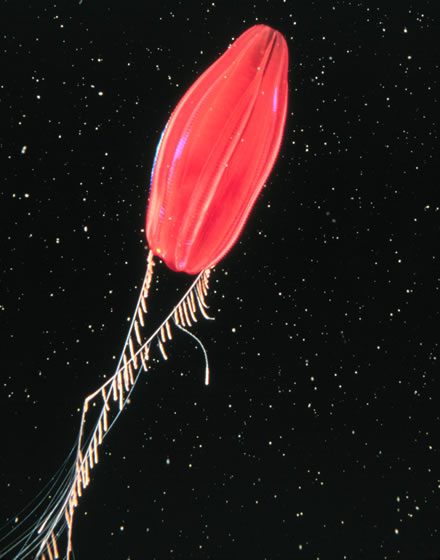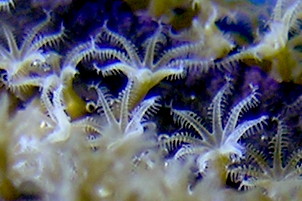|
Air Fern
The air fern (''Sertularia argentea'') is a dead and dried colony of hydrozoans, a species of marine animal in the family Sertulariidae related to corals and jellyfish. Air ferns are typically dyed green and sold as a curiosity, as a decorative "indoor plant"; the same skeletons of former colonies of hydroids are sold in their natural dried state as the sea fir and Neptune plant as underwater decorations for aquariums. Description Despite a superficial resemblance to plants, air ferns are actually animal skeletons or Exoskeleton, shells of marine (ocean), marine hydroid (zoology), hydroids of the Class (biology), class Hydrozoa, phylum Cnidaria. The dried colonies are often dyed green, but the coloring will dissolve when soaked in water. Undyed ferns are sometimes labeled as "Neptune plants". The fernlike branches of ''S. argentea'' are composed of many small, chitinous chambers where individual animals once lived. When the colony was alive, a polyp (zoology), polyp with nume ... [...More Info...] [...Related Items...] OR: [Wikipedia] [Google] [Baidu] |
Carl Linnaeus
Carl Linnaeus (23 May 1707 – 10 January 1778), also known after ennoblement in 1761 as Carl von Linné,#Blunt, Blunt (2004), p. 171. was a Swedish biologist and physician who formalised binomial nomenclature, the modern system of naming organisms. He is known as the "father of modern Taxonomy (biology), taxonomy". Many of his writings were in Latin; his name is rendered in Latin as and, after his 1761 ennoblement, as . Linnaeus was the son of a curate and was born in Råshult, in the countryside of Småland, southern Sweden. He received most of his higher education at Uppsala University and began giving lectures in botany there in 1730. He lived abroad between 1735 and 1738, where he studied and also published the first edition of his ' in the Netherlands. He then returned to Sweden where he became professor of medicine and botany at Uppsala. In the 1740s, he was sent on several journeys through Sweden to find and classify plants and animals. In the 1750s and 1760s, he co ... [...More Info...] [...Related Items...] OR: [Wikipedia] [Google] [Baidu] |
Hydrozoa
Hydrozoa (hydrozoans; from Ancient Greek ('; "water") and ('; "animals")) is a taxonomy (biology), taxonomic class (biology), class of individually very small, predatory animals, some solitary and some colonial, most of which inhabit saline water. The colony (biology), colonies of the colonial species can be large, and in some cases the specialized individual animals cannot survive outside the colony. A few genus, genera within this class live in freshwater ecosystem, freshwater habitats. Hydrozoans are related to jellyfish and corals, which also belong to the phylum (biology), phylum Cnidaria. Some examples of hydrozoans are the freshwater jelly (''Craspedacusta sowerbyi''), freshwater polyps (''Hydra (genus), Hydra''), ''Obelia'', Portuguese man o' war (''Physalia physalis''), chondrophores (Porpitidae), and pink-hearted hydroids (''Tubularia''). Anatomy Most hydrozoan species include both a polyp (zoology), polypoid and a medusa (biology), medusoid stage in their Biological ... [...More Info...] [...Related Items...] OR: [Wikipedia] [Google] [Baidu] |
North Sea
The North Sea lies between Great Britain, Denmark, Norway, Germany, the Netherlands, Belgium, and France. A sea on the European continental shelf, it connects to the Atlantic Ocean through the English Channel in the south and the Norwegian Sea in the north. It is more than long and wide, covering . It hosts key north European shipping lanes and is a major fishery. The coast is a popular destination for recreation and tourism in bordering countries, and a rich source of energy resources, including wind energy, wind and wave power. The North Sea has featured prominently in geopolitical and military affairs, particularly in Northern Europe, from the Middle Ages to the modern era. It was also important globally through the power northern Europeans projected worldwide during much of the Middle Ages and into the modern era. The North Sea was the centre of the Viking Age, Vikings' rise. The Hanseatic League, the Dutch Golden Age, Dutch Republic, and Kingdom of Great Britain, Brita ... [...More Info...] [...Related Items...] OR: [Wikipedia] [Google] [Baidu] |
Trawling
Trawling is an industrial method of fishing that involves pulling a fishing net through the water behind one or more boats. The net used for trawling is called a trawl. This principle requires netting bags which are towed through water to catch different species of fishes or sometimes targeted species. Trawls are often called towed gear or dragged gear. The boats that are used for trawling are called trawlers or draggers. Trawlers vary in size from small open boats with as little as 30 hp (22 kW) engines to large factory trawlers with over 10,000 hp (7.5 MW). Trawling can be carried out by one trawler or by two trawlers fishing cooperatively (pair trawling). Trawling can be contrasted with trolling. While trawling involves a net and is typically done for commercial usage, trolling instead involves a reel, rod and a bait or a lure and is typically done for recreational purposes. Trawling is also commonly used as a scientific sampling, or survey, method. Bottom vs. mid ... [...More Info...] [...Related Items...] OR: [Wikipedia] [Google] [Baidu] |
Bryozoa
Bryozoa (also known as the Polyzoa, Ectoprocta or commonly as moss animals) are a phylum of simple, aquatic animal, aquatic invertebrate animals, nearly all living in sedentary Colony (biology), colonies. Typically about long, they have a special feeding structure called a lophophore, a "crown" of tentacles used for filter feeder, filter feeding. Most Marine (ocean), marine bryozoans live in tropical waters, but a few are found in oceanic trenches and polar waters. The bryozoans are classified as the Stenolaemata, marine bryozoans (Stenolaemata), Phylactolaemata, freshwater bryozoans (Phylactolaemata), and Gymnolaemata, mostly-marine bryozoans (Gymnolaemata), a few members of which prefer brackish water. 5,869living species are known. Originally all of the crown group Bryozoa were colonial, but as an adaptation to a mesopsammal (interstitial spaces in marine sand) life or to deep-sea habitats, secondarily solitary forms have since evolved. Solitary species have been described i ... [...More Info...] [...Related Items...] OR: [Wikipedia] [Google] [Baidu] |
Hydrotheca
{{Short pages monitor ... [...More Info...] [...Related Items...] OR: [Wikipedia] [Google] [Baidu] |
Tentacles
In zoology, a tentacle is a flexible, mobile, and elongated organ present in some species of animals, most of them invertebrates. In animal anatomy, tentacles usually occur in one or more pairs. Anatomically, the tentacles of animals work mainly like muscular hydrostats. Most forms of tentacles are used for grasping and feeding. Many are sensory organs, variously receptive to touch, vision, or to the smell or taste of particular foods or threats. Examples of such tentacles are the eyestalks of various kinds of snails. Some kinds of tentacles have both sensory and manipulatory functions. A tentacle is similar to a cirrus, but a cirrus is an organ that usually lacks the tentacle's strength, size, flexibility, or sensitivity. A nautilus has cirri, but a squid has tentacles. Invertebrates Molluscs Many molluscs have tentacles of one form or another. The most familiar are those of the pulmonate land snails, which usually have two sets of tentacles on the head: when exte ... [...More Info...] [...Related Items...] OR: [Wikipedia] [Google] [Baidu] |
Polyp (zoology)
A polyp in zoology is one of two forms found in the phylum Cnidaria, the other being the medusa (biology), medusa. Polyps are roughly cylindrical in shape and elongated at the axis of the vase-shaped body. In solitary polyps, the aboral (opposite to oral) end is attached to the substrate (biology), substrate by means of a disc-like holdfast (biology), holdfast called a pedal disc, while in colony (biology), colonies of polyps it is connected to other polyps, either directly or indirectly. The oral end contains the mouth, and is surrounded by a circlet of tentacles. Classes In the class Anthozoa, comprising the sea anemones and corals, the individual is always a polyp; in the class Hydrozoa, however, the individual may be either a polyp or a medusa (biology), medusa, with most species undergoing a biological life cycle, life cycle with both a polyp stage and a medusa stage. In the class Scyphozoa, the medusa stage is dominant, and the polyp stage may or may not be present, depen ... [...More Info...] [...Related Items...] OR: [Wikipedia] [Google] [Baidu] |
Chitin
Chitin (carbon, C8hydrogen, H13oxygen, O5nitrogen, N)n ( ) is a long-chain polymer of N-Acetylglucosamine, ''N''-acetylglucosamine, an amide derivative of glucose. Chitin is the second most abundant polysaccharide in nature (behind only cellulose); an estimated 1 billion tons of chitin are produced each year in the biosphere. It is a primary component of cell walls in fungi (especially filamentous and mushroom-forming fungi), the exoskeletons of arthropods such as crustaceans and insects, the radulae, cephalopod beaks and Gladius (cephalopod), gladii of molluscs and in some nematodes and diatoms. It is also synthesised by at least some fish and lissamphibians. Commercially, chitin is extracted from the shells of crabs, shrimps, shellfish and lobsters, which are major by-products of the seafood industry. The structure of chitin is comparable to cellulose, forming crystalline nanofibrils or whiskers. It is functionally comparable to the protein keratin. Chitin has proved useful ... [...More Info...] [...Related Items...] OR: [Wikipedia] [Google] [Baidu] |
Sertularia Argentea 6880622
''Sertularia'' is a genus of hydroids in the family Sertulariidae. Species The following species are recognized in the genus ''Sertularia'': *''Sertularia albimaris'' Mereschkowsky, 1877 *Air Fern The air fern (''Sertularia argentea'') is a dead and dried colony of hydrozoans, a species of marine animal in the family Sertulariidae related to corals and jellyfish. Air ferns are typically dyed green and sold as a curiosity, as a decorative ... (''Sertularia argentea'' Linnaeus, 1758) *''Sertularia australis'' (Kirchenpauer, 1864) *''Sertularia borneensis'' Billard, 1925 *''Sertularia brashnikowi'' Kudelin, 1914 *''Sertularia brunnea'' (Stechow, 1923) *''Sertularia camtschatika'' Vinogradov, 1947 *''Sertularia ceylonensis'' Stechow, 1921 *''Sertularia conferta'' (Kirchenpauer, 1864) *''Sertularia converrucosa'' Naumov, 1960 *''Sertularia cupressina'' Linnaeus, 1758 *''Sertularia cupressoides'' Clark, 1876 *''Sertularia distans'' (Lamouroux, 1816) *''Sertularia dohrni'' Stecho ... [...More Info...] [...Related Items...] OR: [Wikipedia] [Google] [Baidu] |
Cnidaria
Cnidaria ( ) is a phylum under kingdom Animalia containing over 11,000 species of aquatic invertebrates found both in fresh water, freshwater and marine environments (predominantly the latter), including jellyfish, hydroid (zoology), hydroids, sea anemones, corals and some of the smallest marine parasites. Their distinguishing features are an uncentralized nervous system distributed throughout a gelatinous body and the presence of cnidocytes or cnidoblasts, specialized cells with ejectable flagella used mainly for envenomation and capturing prey. Their bodies consist of mesoglea, a non-living, jelly-like substance, sandwiched between two layers of epithelium that are mostly one cell (biology), cell thick. Cnidarians are also some of the few animals that can reproduce both sexually and asexually. Cnidarians mostly have two basic body forms: swimming medusa (biology), medusae and sessility (motility), sessile polyp (zoology), polyps, both of which are radially symmetrical with mou ... [...More Info...] [...Related Items...] OR: [Wikipedia] [Google] [Baidu] |
Phylum
In biology, a phylum (; : phyla) is a level of classification, or taxonomic rank, that is below Kingdom (biology), kingdom and above Class (biology), class. Traditionally, in botany the term division (taxonomy), division has been used instead of phylum, although the International Code of Nomenclature for algae, fungi, and plants accepts the terms as equivalent. Depending on definitions, the animal kingdom Animalia contains about 31 phyla, the plant kingdom Plantae contains about 14 phyla, and the fungus kingdom Fungi contains about eight phyla. Current research in phylogenetics is uncovering the relationships among phyla within larger clades like Ecdysozoa and Embryophyta. General description The term phylum was coined in 1866 by Ernst Haeckel from the Greek (, "race, stock"), related to (, "tribe, clan"). Haeckel noted that species constantly evolved into new species that seemed to retain few consistent features among themselves and therefore few features that distinguishe ... [...More Info...] [...Related Items...] OR: [Wikipedia] [Google] [Baidu] |










